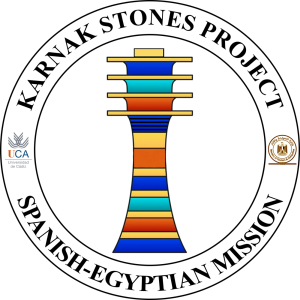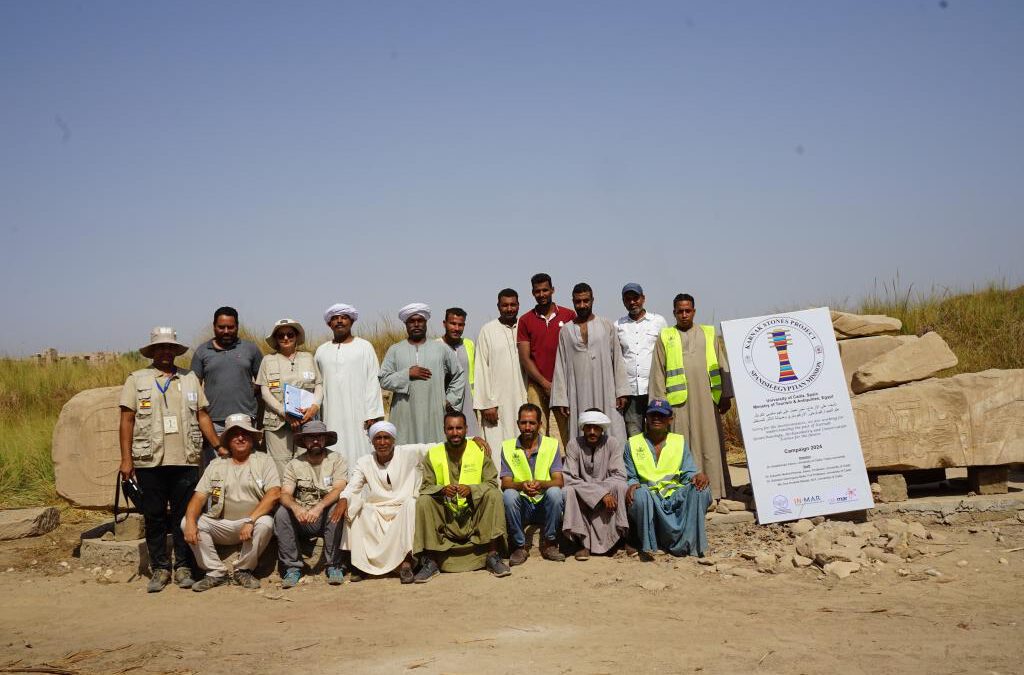Over time, nature had begun to reclaim parts of Karnak, with invasive plants like Halfa grass weaving
their roots deep into the cracks of ancient stone blocks. These plants exerted mechanical pressure,
slowly widening fractures, dislodging fragments, and accelerating the weathering of precious
inscriptions and carvings. Left unchecked, this vegetation threatened the stability and stability of
these invaluable remnants of Egypt’s past. Throughout the mission, our team undertook a meticulous
cleaning process, carefully extracting plants and their root systems to prevent further damage. We
filled 25 large containers, each 6 meters long, with vegetation and debris, gradually clearing the
mastabas and surrounding areas. Special attention was paid to the narrow passages between stone
clusters, where dense plant growth had obscured key architectural elements. This massive effort not
only safeguarded the blocks from ongoing biological deterioration but also revealed long-hidden
details of the site’s layout. With the stones now fully visible, we could begin detailed documentation
through photogrammetry, sketching, and 3D laser scanning. These newly exposed features provide
invaluable clues to the original arrangement of the structures, bringing us closer to understanding
their historical context and guiding future restoration initiatives. By reclaiming the site from
encroaching vegetation, we’ve taken a important step toward preserving Karnak’s legacy, allowing the
stones to tell their stories without nature’s interference.

